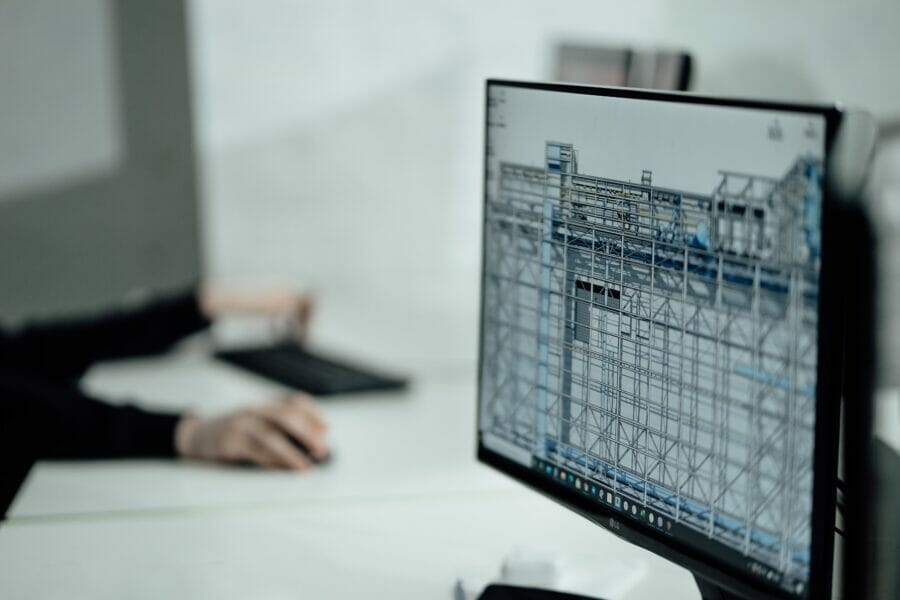The construction industry is undergoing a remarkable transformation thanks to advancements in technology. From groundbreaking innovations to streamlined processes, technology is revolutionizing the way construction projects are designed, planned, and executed. In this article, we will explore how technology is reshaping the construction industry and the numerous benefits it offers.
Robotics and Automation
The integration of robotics and automation has transformed construction sites. Robots can perform repetitive tasks with precision and speed, reducing the need for manual labor and minimizing human error. For instance, autonomous brick-laying robots can lay bricks faster and more accurately than human workers. LinkedIn points out the exceptional use of robotic exoskeletons to assist workers in heavy lifting, reducing the risk of injuries and increasing productivity. Automation is also applied to various construction processes, such as concrete pouring and rebar bending, improving efficiency and reducing construction time.
Virtual Reality (VR) and Augmented Reality (AR)
Virtual Reality and Augmented Reality technologies have made significant strides in the construction industry. Virtual Reality allows stakeholders to experience a building or construction project in a simulated environment before it is constructed. It enables immersive walkthroughs, visualization of design elements, and identification of design flaws. Augmented Reality, on the other hand, overlays digital information onto the physical world, providing real-time data and enhancing collaboration on construction sites. AR can be used for on-site measurements, installation guidance, and training, enhancing worker productivity and accuracy.
Cloud-Based Collaboration
If you’re a builder, you may already know how cloud computing has revolutionized collaboration in the construction industry. Cloud-based platforms allow project teams to access, share, and collaborate on project information from anywhere, at any time. This improves communication, streamlines document management, and ensures all stakeholders are working with the latest project data. Cloud-based collaboration tools facilitate real-time updates, reduce delays, and enhance productivity, leading to better project coordination and successful project delivery.
Internet of Things (IoT) and Sensors
The Internet of Things (IoT) has paved the way for connected construction sites. IoT devices and sensors can collect real-time data on various aspects of construction projects, including equipment usage, material inventory, and environmental conditions. This data can be analyzed to optimize resource allocation, track project progress, and improve safety measures. IoT devices can also detect equipment failures, monitor energy usage, and provide predictive maintenance, reducing downtime and improving overall project efficiency.
Drones for Surveying and Inspections
In the opinion of Headlight.com, drones have become an invaluable tool in the construction industry. They come equipped with cameras and sensors that can capture high-resolution images, videos, and 3D maps of construction sites. Drones are used for surveying, monitoring construction progress, conducting inspections, and identifying potential safety hazards. They can reach areas that are difficult or dangerous for humans, providing a cost-effective and efficient way to collect data and make informed decisions.
Prefabrication and Modular Construction
Prefabrication and modular construction methods have gained popularity in recent years, driven by technological advancements. Prefabrication involves building components off-site in controlled environments and then assembling them on-site. This approach offers several advantages, including improved quality control, reduced construction time, and minimized waste. With the help of technology, precise measurements, and automated manufacturing processes, prefabricated components can be customized and assembled with greater accuracy and efficiency.
Incorporating BIM, drones, prefabrication, robotics, virtual and augmented reality, cloud-based collaboration, and IoT is transforming how construction projects are planned, executed, and managed. These technological advancements bring numerous benefits, including enhanced project coordination, improved safety, reduced costs, faster construction timelines, and higher-quality outcomes. Embracing technology in construction is no longer an option but a necessity for companies aiming to stay competitive and deliver successful projects in the modern era.







